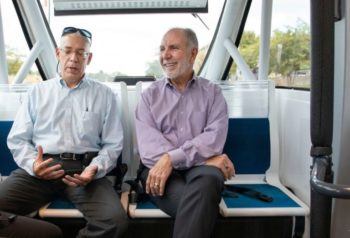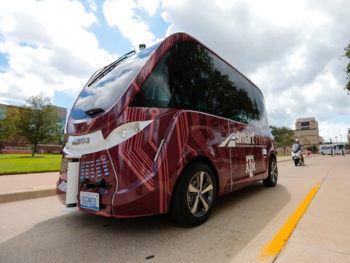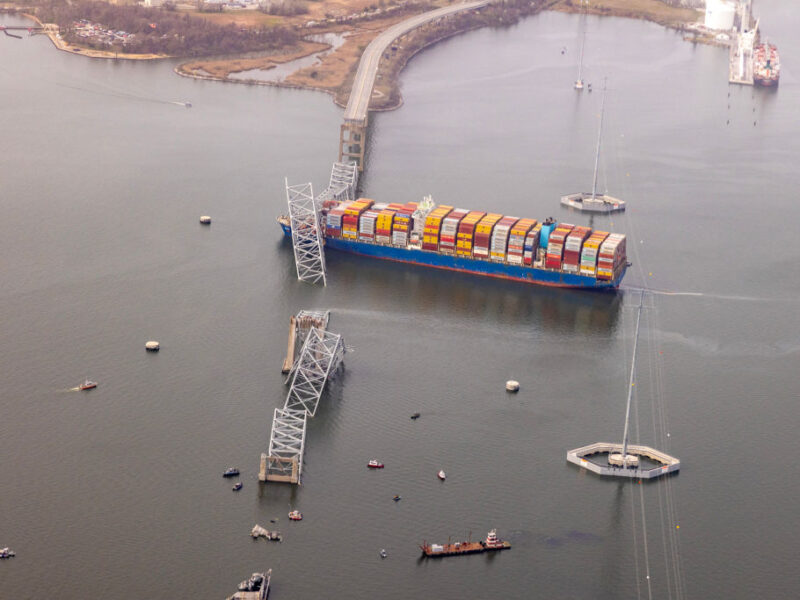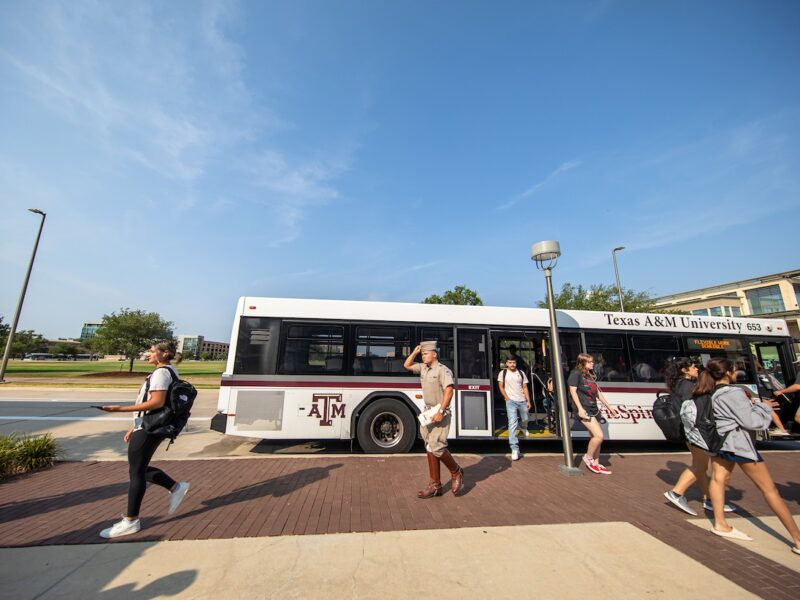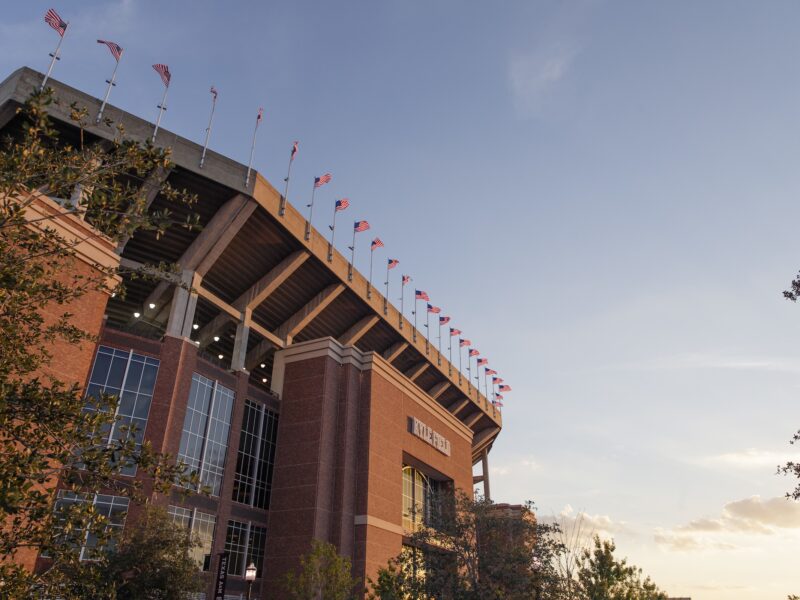President Young Takes A Ride On TTI’s Autonomous Shuttle
The Texas A&M Transportation Institute (TTI) is leading a technology demonstration of the Navya Autonom Shuttle, an autonomous, self-driving, 11-passenger electric vehicle developed for use in public transportation service. TTI’s partners in the project are Texas A&M University, Texas A&M Transportation Services and the shuttle’s maker, Navya.
Texas A&M President Michael K. Young said he is pleased with the amazing progress that has been made on the autonomous shuttle project. Young himself rode the shuttle on Sept. 25.
“As a tier-one research university, it is fitting that Texas A&M is at the forefront of exploring innovative transportation technologies. I am so proud that TTI is taking a leading role in this endeavor. I’m excited to see how these shuttles will work to make our campus community safer, more accessible and better connected,” Young said.
The shuttle runs a route circling the Corps of Cadets dorms and Southside Garage — on Texas A&M’s main campus Monday through Friday, 10 a.m. to 4 p.m., through Nov. 15. It’ll also be on stationary display Oct. 26 for the Texas A&M vs. Mississippi State football game.
The shuttle incorporates optimized navigation and safety features, using a variety of guidance and detection systems — light detection and ranging sensors, cameras and GPS real-time kinematic positioning. These systems are coordinated on board the vehicle by interpretive, deep-learning software that adapts to real-time conditions based on input from the sensors and cameras. Guided by these technologies, the shuttle “drives itself” without human steering or braking. (In fact, the vehicle doesn’t even have a traditional steering wheel or brake pedal.) A safety driver is aboard, though, should human intervention be needed.
“The shuttle is programmed to recognize obstacles in its path, which could include vehicles, pedestrians, bicyclists and other road users,” explains Senior Research Scientist Bob Brydia, manager of TTI’s Advanced Transportation Operations Program and principal investigator on the project. “Our demonstration will explore the technology’s potential in improving campus mobility while maintaining (and possibly improving) safety. Through surveys, we’re asking riders for their feedback to determine interest in autonomous options like the shuttle, as well as gauge how accepting they are of vehicles that drive themselves.”
The surveys of shuttle riders and other information collected will inform planning for future transit and transportation options on campus and in the surrounding Bryan-College Station community. The research results will examine scientific, engineering and public acceptance factors associated with the introduction of autonomous shuttles and other advanced vehicle technologies into our driving culture. Texas A&M is funding the demonstration under the Campus Transportation Technology Initiative, a project looking at the larger issue of how transportation innovation can improve campus mobility and safety. Findings from the project will inform elements of the recently updated Campus Master Plan.
“Initiatives like this one are fostering a more connected, walkable, bikeable and greener campus through innovative technologies and multimodal services,” says Peter Lange, associate vice president of Texas A&M University Transportation Services. “They’re also leveraging faculty expertise, and enriching student educational opportunities to work on cutting edge research projects and experience new technology in their daily lives.”
This article originally appeared on the Texas A&M Transportation Institute website.
